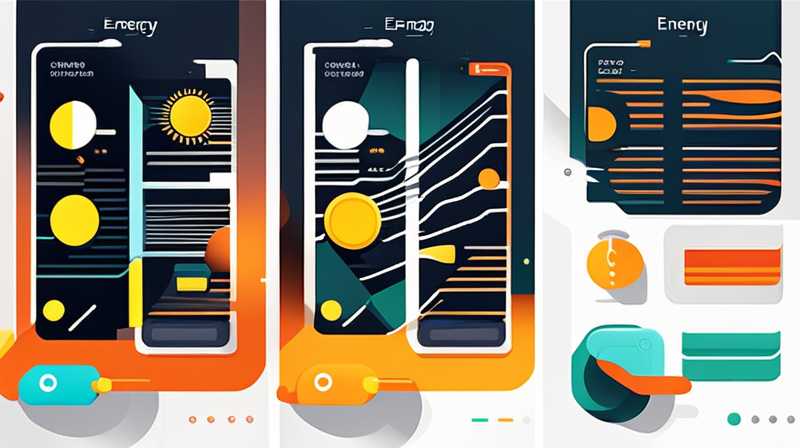
1. The most energy-saving solar energy sources are photovoltaic (PV) systems, concentrating solar power (CSP), and solar thermal energy; 2. Among these, photovoltaic systems are considered the most versatile and widely adopted; 3. Durability factors for solar technologies include material composition, installation method, and maintenance. Photovoltaic panels, particularly those made from monocrystalline silicon, have the longest lifespan and greatest efficiency under various conditions; 4. Innovations in battery storage and solar panel technology further enhance the energy-saving capacity and longevity of these systems.
1. UNDERSTANDING SOLAR ENERGY TECHNOLOGIES
The landscape of solar energy is diverse, encompassing various technologies designed to harness sunlight for electricity and heat. Among these, photovoltaic (PV) systems and concentrating solar power (CSP) stand out for their distinctive approaches to converting solar energy into usable forms. PV systems directly convert sunlight into electricity using semiconductor materials, while CSP utilizes mirrors or lenses to concentrate a large area of sunlight, generating heat that can drive a turbine for electricity generation.
The choice of solar technology largely hinges upon the application, efficiency, geographic location, and the required investment. Photovoltaic systems, particularly those using monocrystalline silicon, demonstrate remarkable energy conversion efficiency and durability, making them advantageous for both residential and commercial applications. CSP, though requiring significant land and specific sun conditions, showcases potential in utility-scale projects where larger installations can be optimized for maximum sun exposure.
2. ENERGY SAVINGS FROM PHOTOVOLTAIC SYSTEMS
PV systems stand out as they provide a practical solution to harnessing solar energy with lesser dependency on sunlight intensity. The efficiency rate, measured in percentage, refers to the amount of solar energy converted to electricity. Most market-leading PV panels achieve efficiencies ranging from 15% to over 22%, meaning they can effectively convert a significant portion of sunlight into usable electricity.
One of the core reasons for the energy-saving attributes of PV is their capacity to operate in various conditions. Modern PV technologies, such as bifacial panels, can utilize light reflected from surrounding surfaces, thereby enhancing energy generation. Their modular design means they can be deployed at various scales, from small rooftop installations to vast solar farms, which further contributes to their overall efficiency and energy savings.
3. DURABILITY OF SOLAR ENERGY SYSTEMS
Durability in solar energy systems is a critical factor as it directly impacts the long-term viability and cost-effectiveness of the investment. Monocrystalline silicon panels are recognized for having longer lifespans, often exceeding 25 years with warranties to match. Such longevity is extended by their resilient constructions and resistance to environmental factors like sand, hail, and high temperatures.
CSP systems’ durability primarily relies on the quality of materials used in mirrors and turbines. Advanced coatings for mirrors help reduce degradation from weathering.
Furthermore, regular maintenance plays a vital role in enhancing the lifespan and durability of solar technologies. It ensures efficiency by cleaning the panels or mirrors, checking for damage, and replacing worn-out components as necessary. Properly maintained systems boast higher performance rates, maximizing energy savings.
4. INNOVATIONS IN SOLAR TECHNOLOGIES
Continuous advancements in solar technology contribute not only to increased energy savings but also improve durability. Innovations in materials, such as perovskite solar cells, promise higher efficiency and lower production costs, presenting a paradigm shift in the industry. These emerging technologies have shown potential for remarkable energy conversion rates, effectively exceeding current mainstream options.
Another important innovation is the installation of energy storage solutions, like lithium-ion batteries, paired with solar systems. These batteries allow users to store excess energy generated during peak sunlight hours to be utilized during the night or cloudy days. This setup not only ensures a more reliable power supply but also maximizes the efficiency of solar energy systems, augmenting their energy-saving traits.
FAQs
WHAT ARE THE DIFFERENCES BETWEEN PHOTOVOLTAIC AND CONCENTRATING SOLAR POWER SYSTEMS?
Photovoltaic systems transform sunlight directly into electricity using semiconductor materials, typically through solar panels. This method is scalable and suitable for various settings, including small homes and large solar farms. Conversely, concentrating solar power systems utilize mirrors or lenses to focus sunlight onto a small area, generating heat to produce electricity via steam turbines. CSP systems require more land and are often better suited for large-scale projects in sunny areas. PV systems, however, are more versatile and can be installed on rooftops and commercial properties more easily.
HOW DOES MAINTENANCE AFFECT THE EFFICIENCY AND DURABILITY OF SOLAR SYSTEMS?
Regular maintenance is paramount for optimizing the performance and extending the lifespan of solar systems. Routine checks and cleaning can prevent debris accumulation on panels, which could significantly reduce their efficiency. Moreover, addressing issues like loose wiring, damaged panels, or faulty inverters can prevent further complications that may compromise energy output. Properly maintained systems ensure maximum efficiency, leading to greater energy savings and enhancing overall durability, thereby maximizing the return on investment over the system’s lifetime.
WHAT ARE THE COSTS ASSOCIATED WITH INSTALLING AND MAINTAINING SOLAR ENERGY SYSTEMS?
Costs for solar energy systems can vary significantly based on the type, scale, and complexity of the installation. For photovoltaic systems, initial installation costs typically include the solar panels, inverters, mounts, and labor expenses. Maintenance costs are relatively low, often comprising periodic cleaning and occasional repairs. In contrast, CSP systems may involve higher installation costs due to the required infrastructure for steam generation and heat storage. Nonetheless, long-term savings from reduced electricity bills often outweigh these upfront expenses, making them financially attractive options.
In summary, the energy-saving capabilities and durability of various solar technologies depend on materials, applications, and innovative advancements. Photovoltaic systems exemplify high efficiency due to their direct conversion characteristics and adaptability for different installations. Durability hinges on technology choice, maintenance, and material composition. Moving forward, ongoing innovations promise to redefine the landscape of solar energy, making it an increasingly viable option for sustainable energy solutions. As consumers and businesses aim to reduce their carbon footprint, understanding the nuances of these solar technologies will remain crucial in selecting the most effective systems for energy savings and durability.
Original article by NenPower, If reposted, please credit the source: https://nenpower.com/blog/which-solar-energy-is-the-most-energy-saving-and-durable/


